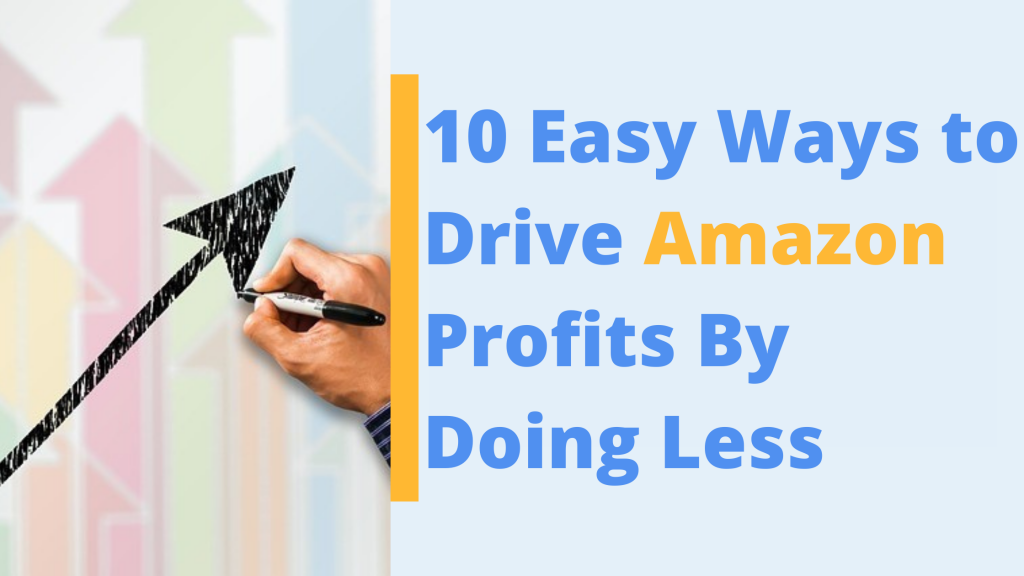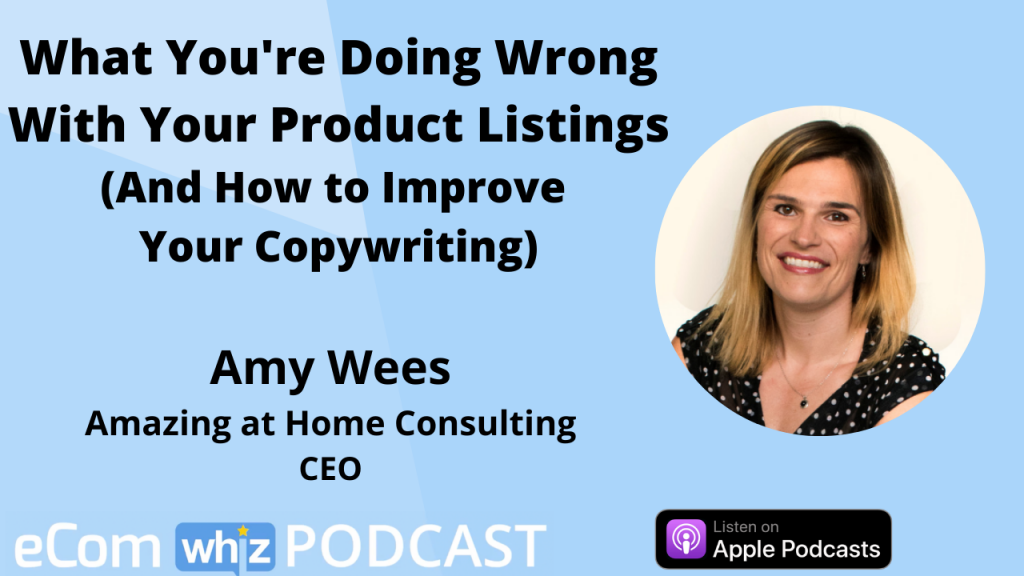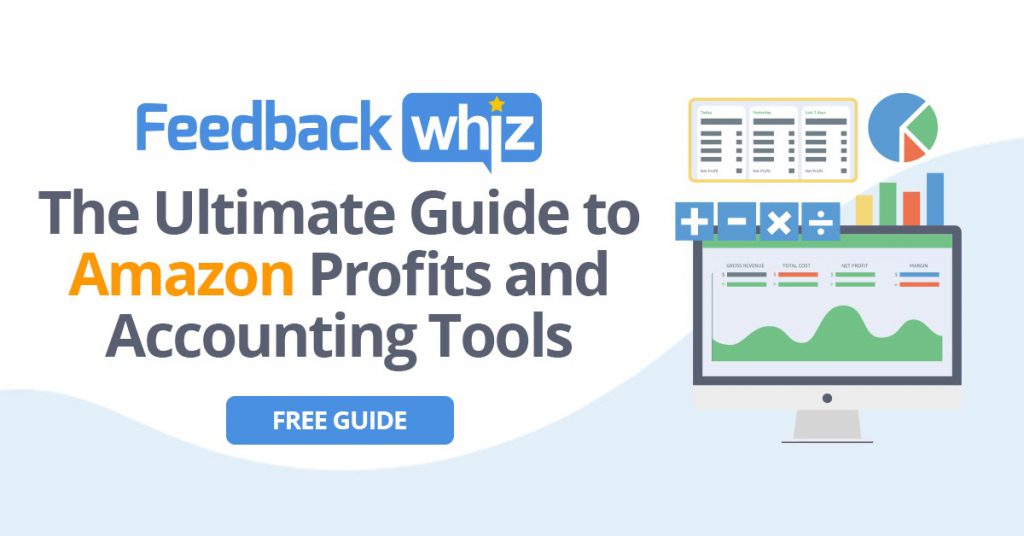
Competition has gotten fierce on Amazon these days, especially if you’re a reseller. And your profits are unlikely to be as high as they were in the early days when anyone could create a listing with no competition. So, with the competition heating up by the day, how can you increase Amazon profits and take your business to the next level?
The good news is that, despite increased competition, the share of sales available to Amazon marketplace sellers is growing. Amazon’s revenue is soaring, as is the percentage of sales coming from third-party sellers.
Furthermore, many sellers are still not running their businesses as effectively as they could. In fact, most sellers make simple mistakes everyday that can pile up and kill Amazon profits. From poor bookkeeping to miserable inventory management and scheduling, there are certain aspects that must run smoothly first for an Amazon business to thrive.
There are still many sellers who have poorly written listings, low-quality images, and aren’t running effective promotions, which gives you an advantage.
So here are ten easy ways to boost your Amazon profit margins in the last quarter of 2021.
10 Easy & Efficient Ways to Increase Amazon Profit Margins
1. Use Repricing Software
With so much competition on Amazon, customers’ purchasing decisions are heavily influenced by pricing.
Consider it from the perspective of a shopper: we all want to get the best deal possible. When a customer is deciding between your product and another, price is often the deciding factor.
This is particularly true if you’re competing with other sellers on the same listing. When two identical products are offered, the customer will almost always choose the lower-priced option. There’s a slim chance that having a better seller feedback profile will persuade someone to choose you.
In this case, an automated repricing tool could help you adjust your pricing and stay ahead of the competition. While it’s common to lose money by overpricing your products, the opposite can also be costly.
You don’t want to sell your items for too little money. When they could get the same sales (and more revenue) by raising the price slightly, many people sell their products much cheaper than the competition.
That is why you must price your products competitively. You will lose money if you price your product too high or too low compared to similar products.
Bottom line: If you price your products too high, you may be missing out on sales. Check-in regularly to ensure that your pricing is competitive.
2. Bundle Products Together
When it comes to bundling products, there’s minimal risk and many rewards, especially in terms of profit. Buyers enjoy getting a better deal by purchasing a less expensive bundle than buying products separately. You benefit from increased profits due to higher sales volume or the movement of slow-moving items (or both).
In addition, there is less competition for the Buy Box, which means higher profit margins. And if it isn’t as profitable as you’d like, you can always break up bundles and sell individual items again or try out different bundles. If you’re going to bundle products, keep in mind that each bundle will require a separate listing.
3. Switch to Credit Card for Your Inventory Purchases
Perhaps you pay your supplier through PayPal or your bank account. While this is fine when you’re first starting and don’t have much revenue to work with, it’s something you should reconsider as your company grows.
When you replenish your inventory with a credit card, you get more money back in your wallet in the form of cash back, points, or other rewards. Of course, you can’t make the most out of these tips without having superb accounting software or specialist consultation.
4. Track Your Suppliers’ Changing Costs
The sales catalog of the supplier you’re negotiating with could contain hundreds or even thousands of items, depending on their size. That’s a lot to go through, and it’d take far too long to do it one at a time.
Instead, automate the process by importing their catalog into a flexible profit analyzer and setting it to track price changes. When a price drops, you have a window of opportunity to buy in bulk and ship the items to Amazon, where you can sell them for a higher profit.
5. Buy-out Your Supplier
If you notice your supplier only has a few units left, it may be in your best interests to purchase the rest, especially if your supplier doesn’t deal with many Amazon sellers.
The main advantage is that you get all of the remaining products. While your competitors wait for their next order to arrive, you’ll be the sole seller for a short period and allowing you to raise your prices until the market rebalances.
Another advantage is that you can get a discount by offering to buy everything.
Related: 6 Inventory Management Tips for Profitability.
6. Capitalize on Out-of-Stock Items
It can be disappointing for a buyer to come across out-of-stock items when searching for a product. But, as an Amazon seller, you can gain from this situation.
Guess who buyers will flock to if you see unavailable items with a good sales rank AND can be the first to ship that item to an Amazon fulfillment center? They don’t care who makes the product available; all they care about is getting it without having to wait for it to restock.
7. Sell Items That Frequently Go Out of Stock
When it comes to increasing Amazon profit margins, this is a very high-risk strategy, so don’t rely on it as your primary method.
It works like this: find products that frequently go out of stock (and have a high sales rank), buy them from suppliers, and then wait for other listings to go out of stock. Activate your listing at that point, but at a much higher price.
Buyers will see your listing as the only one available and will buy from you, resulting in a very high profit margin.
However, there are a lot of disadvantages:
- There’s no guarantee that buyers will pay the much higher price; some may prefer to wait until a lower-cost option becomes available.
- Finding that fine line between a high-profit margin and a ridiculous price may take some tinkering.
- If there are too many gaps between when a product is out of stock and when restocking, your long-term storage fees (if you store for that long) may cancel out or exceed your profit margin.
- When it comes to fad items, this method may result in a product that is no longer in demand.
8. Get Good Reviews From Customers
According to a survey by Podium, 60 percent of consumers look at online reviews at least once per week, and a whopping 93 percent say reviews influence their purchasing decisions. With numbers like those, it’s hard to underestimate the power of a positive product review.
Here are three things you can do to ensure that your customers leave positive reviews:
First and foremost, sell a high-quality product.
Second, make sure your customers are never caught off guard. The product they receive should be exactly what they expect based on information on your product’s page. Also, the more information you provide, the better, and double-check that everything is correct.
Third, provide a positive customer experience. Have procedures in place to provide excellent customer service to your visitors. If something goes wrong, fix it quickly and cheerfully.
Once you’ve determined that your customers will leave positive reviews, the next step is to persuade them to do so. There are many software solutions for automating sending an email to your buyers asking them to leave a review (like FeedbackWhiz!). This way, they’ll be prompted to do so without you having to send many follow-up emails.
9. Keep Product Listings Short and Simple
E-Commerce is a fast-paced environment that satisfies our desire for immediate gratification (free two-day shipping, and more). That means that a product description page that reads like a novel will catch no one’s interest.
There’s a delicate balance to be struck here. This strategy may contradict the previous two, including details that will let your customers know what to expect when they order your product. It’s important to include a lot of information. On the other hand, buyers need to be able to skim your listing and get all of the information they need quickly.
Here are some pointers for writing product descriptions that convey your message without being too long:
- Short and clear sentences are best for product descriptions.
- Avoid using jargon and write in a simple manner so everyone understands.
- Use bullet points to highlight your product’s features quickly.
- Consider the information that will persuade viewers to purchase your product and prioritize it.
It’s also important to keep in mind that not everyone is born with the ability to write. If writing isn’t your strong suit, hiring a copywriter who specializes in product descriptions might be a good idea.
Related: eComWhiz Podcast – What You’re Doing Wrong With Your Product Listings with Amy Wees.

Click above to listen to Amazon at Home CEO Amy Wees discuss how you can improve your copywriting on product listings.
10. Do More Keyword Research
When it comes to keywords, many sellers are missing out. Even if you’ve researched and are ranking for hundreds of keywords, there’s always more to find. Try to find as many different variations of your keywords as possible.
Despite having low search volume, some “long-tail” keywords are extremely valuable because they drive high-targeted traffic to your listing. When you find potential opportunities that you aren’t ranking for, try to include them somewhere in your listing (while keeping your copy sales-focused).
Use a keyword tool like Jungle Scout, Helium10, or ZonGuru to find more long-tail keyword opportunities.
Bottom line: look for additional keyword opportunities, especially long-tail variations of your primary keywords. The more relevant keywords you rank for, the more organic traffic you’ll be able to get from Amazon search.
Final Thought to Increase Amazon Profit Margins
Everyone wants to boost their profit margins, and that is what doing business on Amazon is all about. We provided these tips to help you increase sales and get the momentum you need to overtake your competition and crush it before the end of 2021.
*Editor’s Note: This is a guest post by our friends at Osome Bookkeeping Services.




0 Comments